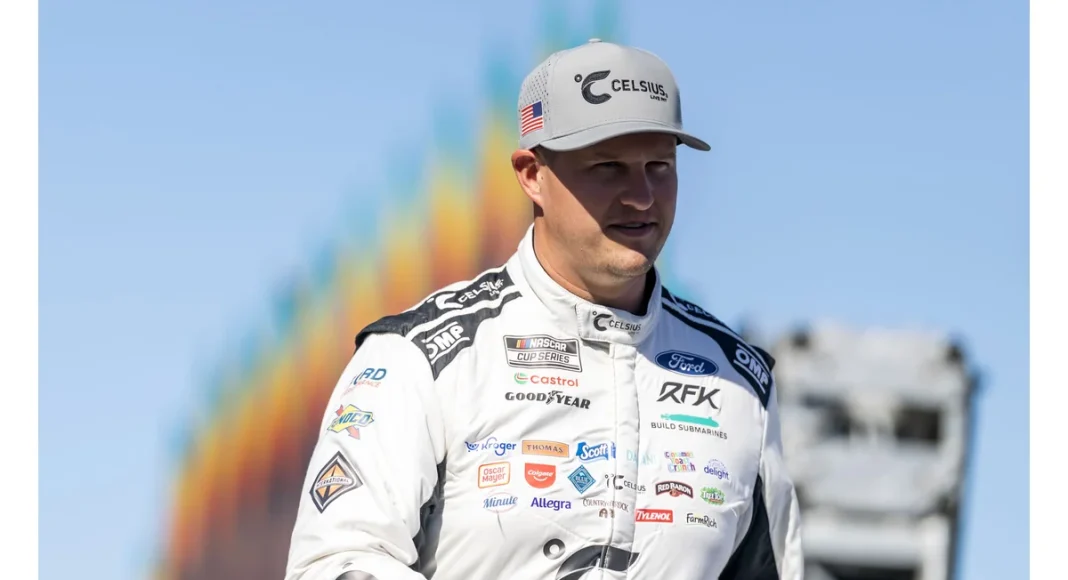During a recent review of NASCAR’s changes at Bristol Motor Speedway, Brad Keselowski Bristol Test Insight has brought an unexpected truth to light. Despite much focus on car aerodynamics and the removal of key components, it turns out that tire management—not aero tweaks—is at the core of short-track performance according to RFK Racing’s Ryan Preece and other voices in the sport.
Wind Tunnel Data and the Short Track Dilemma
When NASCAR introduced the Next Gen car in 2022, it featured a redesigned rear diffuser and specially developed underbody aerodynamic pieces. These adjustments were meant to improve stability and downforce, as wind-tunnel figures projected more grip. Yet, the introduction of these new elements sparked debate within the motorsport community about their real effect on racing—especially on short tracks like Bristol where passing and tire strategy often decide the outcome.
Many drivers and industry insiders questioned whether these changes actually made racing more competitive, or merely created a new set of problems. This ongoing debate fueled what became known as the “wind-tunnel narrative.” The most pressing question soon became: would removing the diffuser or making further aerodynamic changes dramatically shift driver experience and car performance?
Preece’s First-Hand Perspective Dismantles Aero Myths
The discussion took a significant turn when Ryan Preece, who drives for RFK Racing and finished 18th in points after a steady season, publicly challenged the conventional aero-centric thinking. On the popular “Dale Jr Download” podcast, Preece was asked directly how the car feels when driven without the diffuser. He replied,

“I don’t notice any difference. … If you look at a wind tunnel data … I don’t feel that.”
– Ryan Preece, Driver. His straightforward response cut through theoretical arguments and pointed towards a disconnect between laboratory expectations and track reality.
Preece didn’t base his comments on feelings alone. He referenced his lap times at Bristol to reinforce his point:
“I went 14.7 seconds around Bristol Motor Speedway … depending on the tire … I can go 14-70s to 15-00s for a 30-lap run … there were other tires … I’d be only able to go … 15-50s and drop off to 16-20.”
– Ryan Preece, Driver. For fans and engineers alike, these lap times highlight that tire selection, grip, and falloff hold more sway than subtle aerodynamic tweaks, especially over longer runs.
Preece then outlined what he sees as the actual challenge:
“A lot of it is just a combination … initially when this car came out … a lot of drivers were saying that … there’s too much tire … too big a tire. … What I thought … was … the tires were very durable … we needed to soften them up … and have them go through a transition.”
– Ryan Preece, Driver. By suggesting that the tire construction and behavior deserve more attention than simple downforce metrics, he redirected the conversation to a topic that impacts drivers and teams at every level.
The Importance of Tire Strategy and Race Conditions
Preece brought even more nuance by describing real-world situations he faced in 2025, particularly on tracks like Martinsville.
“As this year progressed … Martinsville … there was a massive fall off … guys were struggling … there was definitely a balance. … We don’t want to be blowing tires … a lot of that is on air pressures … trying to get the most performance out of the tire … but … there’ll be really good racing.”
– Ryan Preece, Driver. His comments reveal a careful balancing act: teams need durable yet dynamic tires, and finding the right setup becomes critical—not just for winning races, but for ensuring competitive fields and safe, exciting racing for fans.
The significance of tire management is echoed by other top NASCAR personalities. Denny Hamlin, himself a veteran of Cup Series battles, backed up Preece’s sentiments on his podcast:
“It was never aero. So, I think if anything I think that downforce that they took off of the cars would continue to not help the tire. It just made — it’s not wearing the tire. You got to have downforce to wear a tire down. And as we took downforce off, while I agree with that main sentiment, it’s, just it doesn’t wear tires.”
– Denny Hamlin, Driver. Hamlin’s view supports the idea that reducing downforce did not produce greater tire degradation or shake up field competition like some expected. This suggests that further adjustments must address tire characteristics directly.
This ongoing dialogue around tire construction and race weekend strategy has become a flashpoint among drivers, teams, and manufacturers. As Preece’s consistent messaging over several seasons demonstrates, changes that allow tires to behave dynamically over long green-flag runs—gradually losing grip and requiring driver adaptation—are seen as the key to improving racing, rather than continuing to tinker with aerodynamic elements alone.
Off-Season Reflection and Family Time
After a year of intense competition driving the No. 60 Ford for RFK Racing, Preece has intentionally shifted gears to focus on family and rest. He told Dale Earnhardt Jr. that he’ll keep his race mentality sharp with select modified shows during Speedweeks and plans to spend time in Pensacola for the Snowball Derby, but his main goal is simplicity and recovery.
“As a racer, I’ve been non-stop racing, always thinking about racing for so many years. And for me, it’s hard to shut that switch off because it’s been turned on for many years.”
– Ryan Preece, Driver. With a young daughter and newborn son at home in Connecticut, he emphasized the importance of being present with family and allowing himself to recharge before the new season begins.
The shift from endless travel and competition back to everyday life underscores the challenging balancing act many drivers face. For a competitor whose comments have influenced the sport’s ongoing technical debates, this personal pause demonstrates the need for physical and mental recovery, especially after high-pressure seasons.
Broader Implications for NASCAR’s Future
Preece’s practical insights, now supported by other Cup Series drivers like Denny Hamlin, highlight a crucial transition point for NASCAR. The focus is less about theoretical designs tested in controlled environments and more about tangible changes that enhance the on-track product for both teams and fans. As conversations in Daytona Beach and Charlotte have shown, getting tire construction and strategies right could deliver the kind of dynamic, unpredictable racing that the audience craves, revitalizing traditional venues like Bristol Motor Speedway and Martinsville.
This evolving understanding places mechanics, engineers, and drivers in new positions to shape the sport’s trajectory, emphasizing real-world experience over simulation. As the off-season continues, teams across the country will be working closely with tire manufacturers and rule makers to find the right formula for 2026. The debate between theoretical downforce tweaks and practical tire solutions is ongoing, but it is increasingly clear that voices like Ryan Preece’s are playing a major role in shaping future decisions, and ultimately, the quality of NASCAR competition for both diehard fans and the next generation of viewers.


